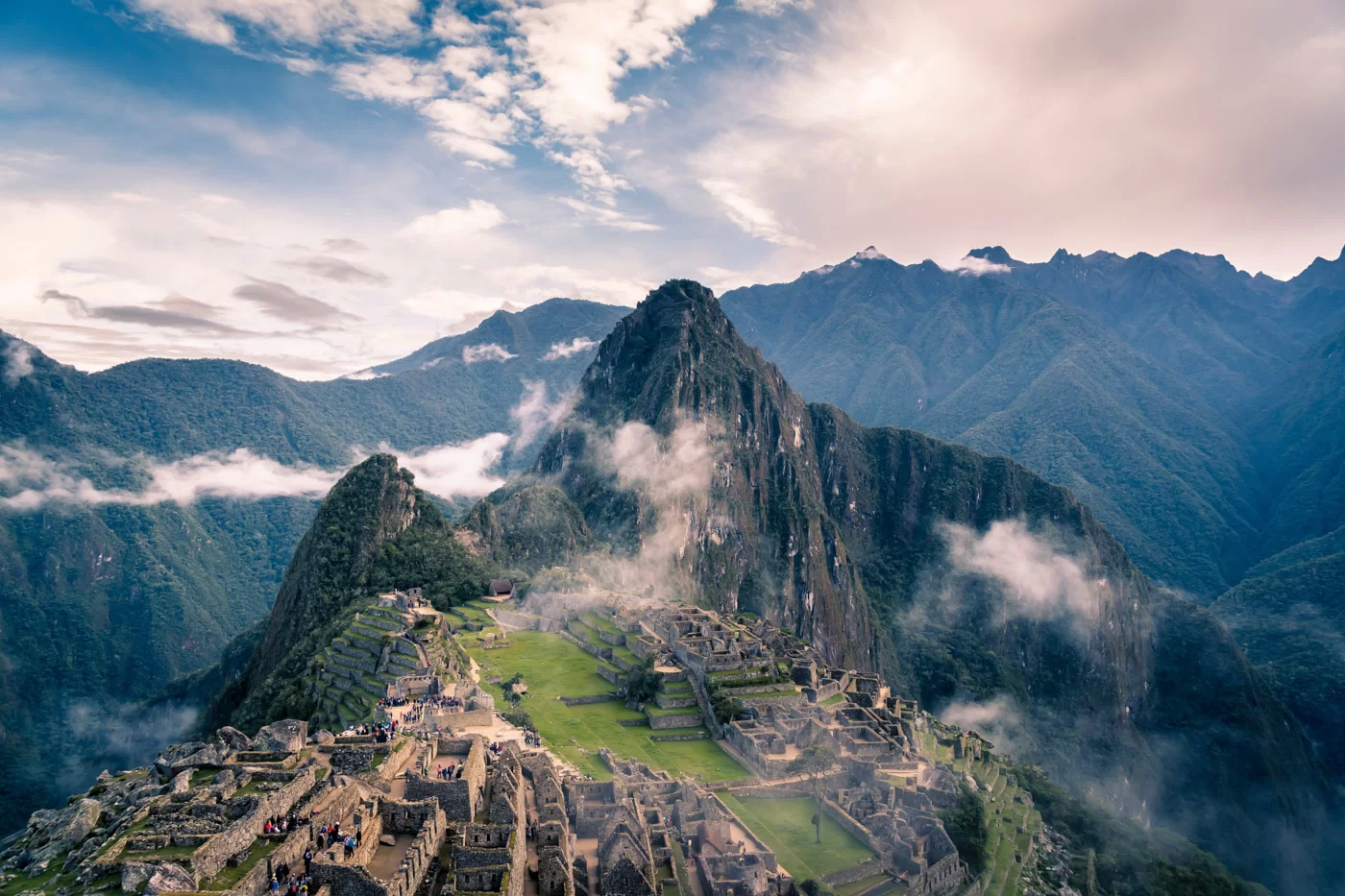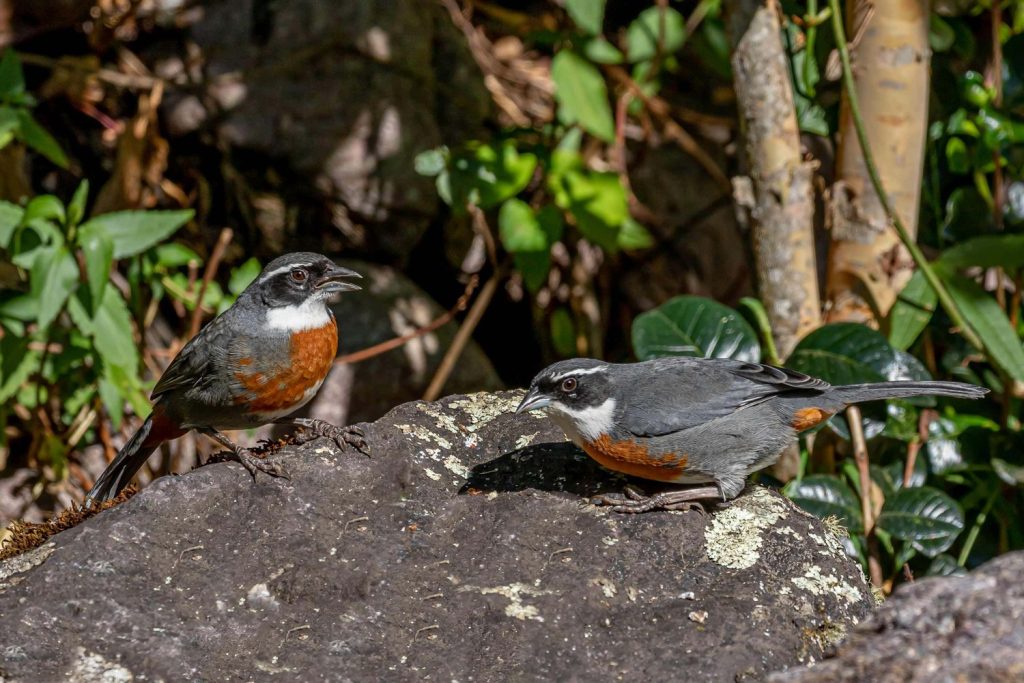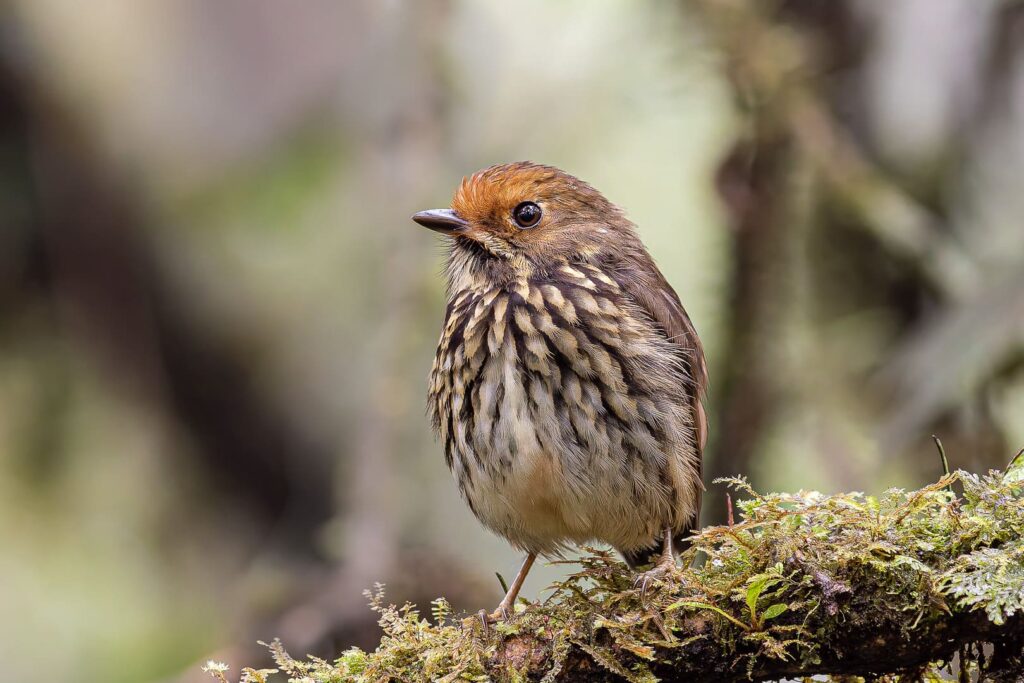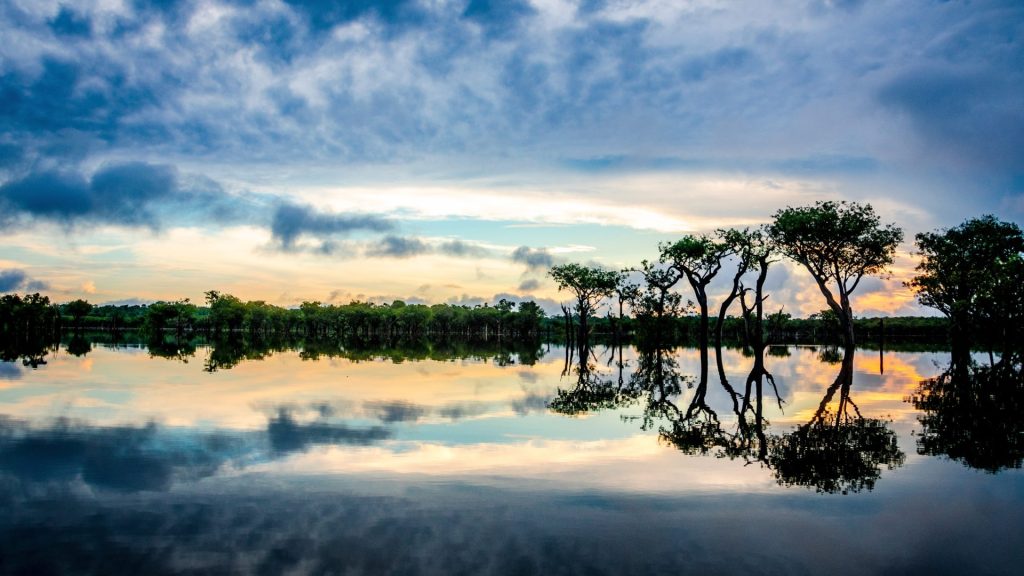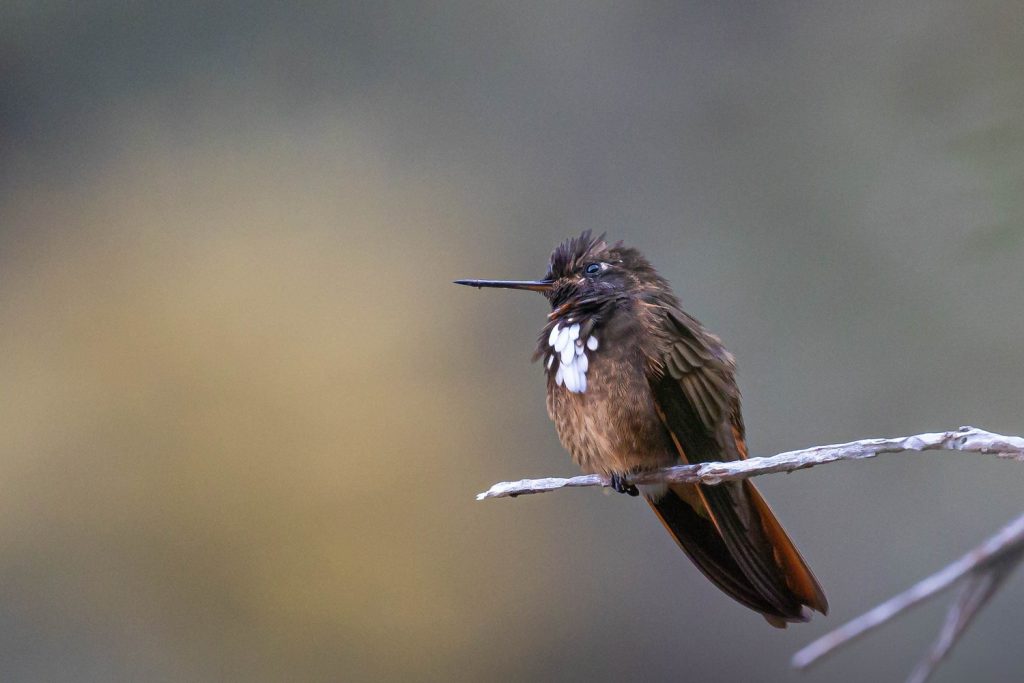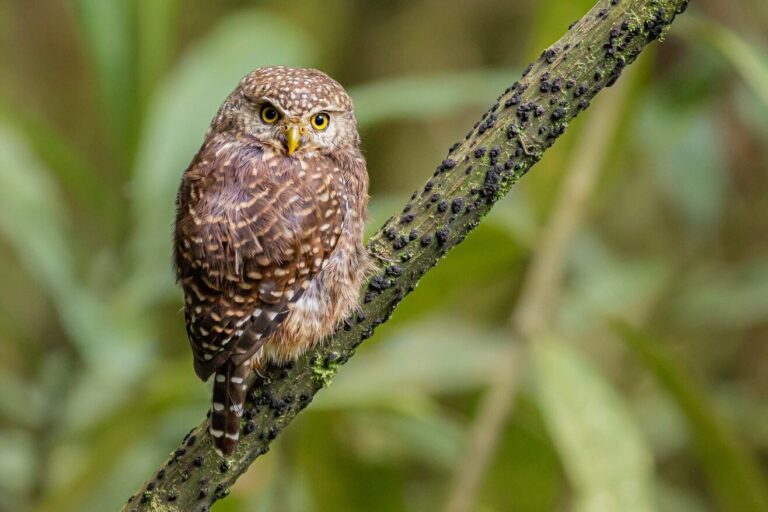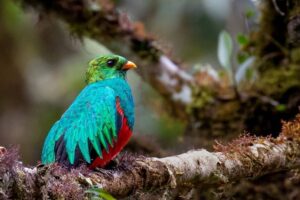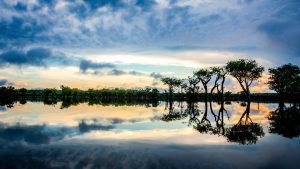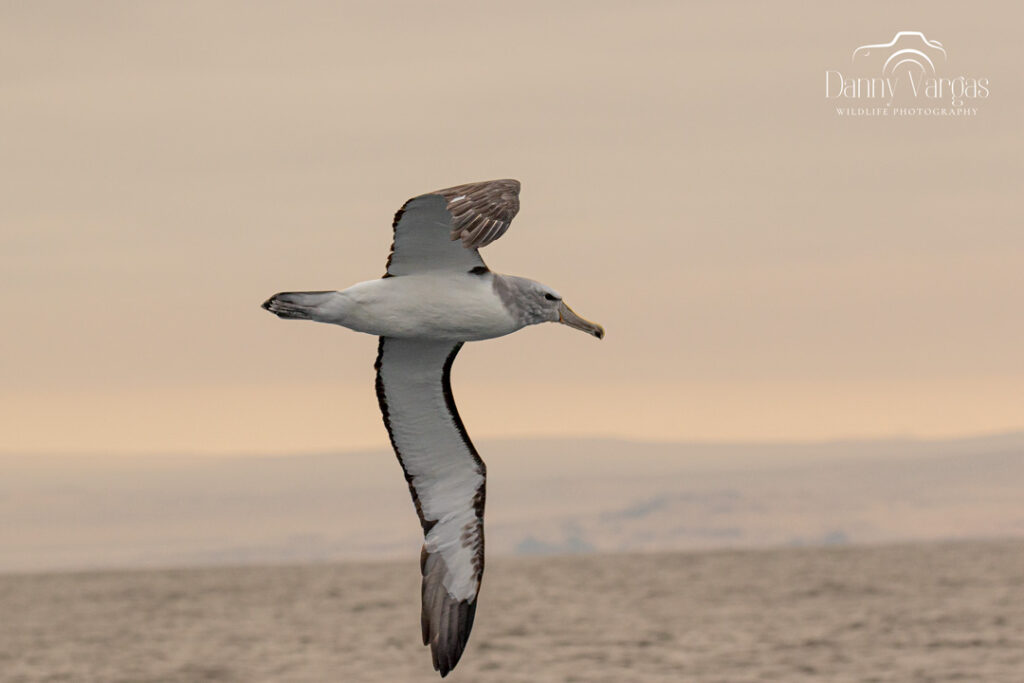BIRDING AND CULTURE IN MACHUPICCHU AND MANU ROAD
- From
- USD 3550
- Trip Type
- Activities
- Trip Duration
- Group Size
- Habitats Covered
The price listed above is based on a minimum of 4 people in double occupancy. If you have any questions please refer to FAQ of send us a message.
- Trip Outline
- Itinerary
- Trip Includes
- Gallery
- FAQ
Trip Outline
Birding and Culture in Peru: A 13-Day Journey from Inca Ruins to the Amazon Rainforest
This 13-day Birding and Culture tour in Peru offers the best of both worlds: top-tier birdwatching and immersive cultural exploration. From the sacred temples of the Inca to the untouched trails of the Manu Biosphere Reserve, this experience blends history and biodiversity across a wide range of breathtaking habitats.
You’ll travel from the high Andean peaks to the lush cloud forests and lowland jungle—encountering dozens of endemic birds while discovering legendary sites like Cusco, Machu Picchu, the Sacred Valley, and the spectacular Manu Road.
This is primarily a birding tour with a strong cultural component—perfect for birders of all levels who also want expert interpretation at Peru’s most iconic archaeological sites.
🐦 Target Endemics and Highlights
This route offers access to some of the most sought-after Andean and Amazonian species, including many endemics:
Bearded Mountaineer, Inca Wren, Creamy-crested Spinetail, Marcapata Spinetail, Chestnut-breasted Mountain-Finch, Urubamba Antpitta, Cuzco Brushfinch, Parodi’s Hemispingus, Puna Thistletail, Golden-collared Tanager, Diademed Tapaculo, Yungas Pygmy-Owl, Grass-green Tanager, White-browed Conebill, Masked Fruiteater, Rufous-capped Thornbill, Sierran Elaenia, Andean Cock-of-the-rock, Golden-headed Quetzal, Amazonian Umbrellabird, Barred Fruiteater, Plushcap, Torrent Duck, and many more.
🗺️ Birding Route and Cultural Highlights
This tour takes you through a diverse series of landscapes—from ancient cities to remote reserves:
- Cusco & Sacred Valley – Acclimate and enjoy cultural birding near Qoricancha, Sacsayhuaman, and Pisaq. Look for Bearded Mountaineer, Rusty-fronted Canastero, Chestnut-breasted Mountain-Finch, Undulated Antpitta.
- Machu Picchu Sanctuary – Combine birding and history in one of the most biodiverse archaeological sites on Earth. Spot Inca Wren, Green-and-white Hummingbird, Torrent Duck, and White-capped Dipper.
- Abra Málaga – Explore puna grasslands and cloud forest for Marcapata Spinetail, Urubamba Antpitta, Unstreaked Tit-Tyrant, Parodi’s Hemispingus.
- Wayqecha Cloud Forest – Elfin forest birding at 3,000 m elevation, with species like the Cuzco Starfrontlet, Crimson-mantled Woodpecker, and Puna Thistletail.
- Cloud Forest – The best Andean Cock-ok-the-rock Lek, Cereulean-capped Manakin, Yungas Manakin, Bolivian Tyrannulet, Cuzco Warbler.
- Amazon Foohills – Bamboo endemics, Manakins, Antbirds, Macaws, etc. Manu Antbird, Scarlet-hooded Barbet, Rufous-headed Woodpecker, and Black-backed Tody-Flycatcher.
🛏️ Accommodations and Travel Comfort
Stay in a combination of 3-star superior hotels and beautiful birding lodges located in key ecological zones. Travel is conducted in private transport with expert Peruvian birding guides who also provide cultural interpretation at Inca heritage sites.
💰 Affordable and Accessible Birding Adventure
This Birding and Culture tour in Peru is designed to be affordable, accessible, and rich in both biodiversity and cultural heritage. With an optimal mix of species diversity, scenic landscapes, and iconic archaeology, it’s one of the best-value trips for birders seeking comfort, quality, and discovery.
Whether it’s your first time in Peru or you’re returning for more lifers, this itinerary offers a unique and unforgettable journey into the heart of Incan and natural history.
| MACHUPICCHU Y MANU ROAD | Lodging | |
| Day 1 | IN + Cusco | Casa Andina Catedral ((3*** sup hotel)) |
| Day 2 | Sacred Valley + Hummingbirds | Pakarectambo (3*** sup hotel) |
| Day 3 | Machupicchu full day | Pakarectambo (3*** sup hotel) |
| Day 4 | Abra Málaga | Pakarectambo (3*** sup hotel) |
| Day 5 | Ollantaytambo + Maras Moray | Casa Andina Catedral ((3*** sup hotel)) |
| Day 6 | Upper Manu Road | Wayquecha Lodge |
| Day 7 | Cloud forest – Manu Road | Cock of the Rock Lodge |
| Day 8 | Cloud forest – Manu Road | Cock of the Rock Lodge |
| Day 9 | Foothills | Manu BioLodge |
| Day 10 | Foothills + Bamboo patch | Manu BioLodge |
| Day 11 | Back to the mountains + missing species | Wayquecha Lodge |
| Day 12 | Back to Cusco + OUT | Casa Andina Catedral ((3*** sup hotel)) |
| Day 13 | City tour in Cusco + OUT | – |
Itinerary
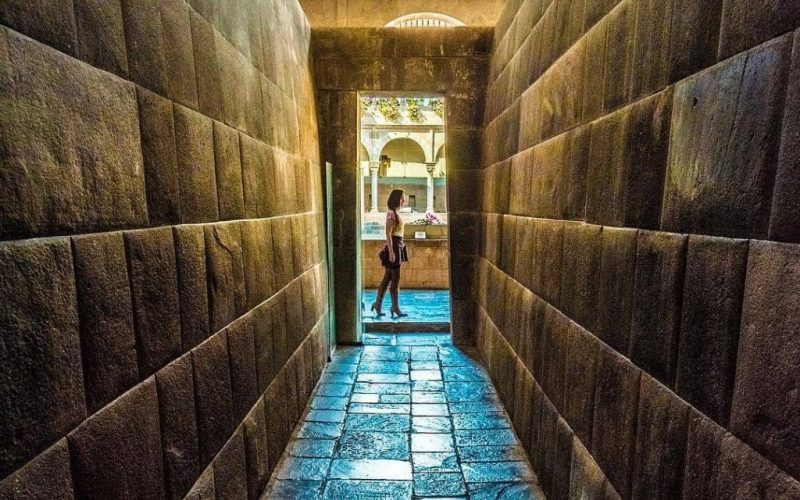
First Day in Cusco – Rest, Acclimatize, and Discover Andean History
Cusco, the ancient capital of the Inca Empire, is a captivating blend of history, living culture, and natural beauty. Located at over 3,300 meters (10,800 ft) in the heart of the Andes, Cusco is known for its breathtaking colonial architecture built atop original Inca stone foundations. It serves as the perfect gateway to iconic destinations such as Machu Picchu, the Sacred Valley, and the Manu National Park.
Upon arrival at the airport, we’ll transfer you to your centrally located hotel so you can rest and begin adjusting to the elevation. Staying near the historic downtown, you’ll have the opportunity (depending on your energy level) to explore colorful local markets, sample authentic Peruvian cuisine, and stroll through narrow cobblestone streets steeped in centuries of history.
Declared a UNESCO World Heritage Site, Cusco is one of the most enchanting cities in Latin America—offering a deep connection to both ancient Andean civilization and vibrant contemporary culture.
🛏️ Night at Casa Andina Catedral (3* superior hotel) – Cusco**
Birding the Sacred Valley – Pisaq and the Hummingbirds of Ensifera Camp
After breakfast, we’ll depart from Cusco and head into the heart of the Urubamba Valley, one of the most important tributaries of the Amazon River. Along the way, we’ll visit Pisaq, a remarkable Inca archaeological site perched on dramatic agricultural terraces that showcase the architectural brilliance of the Inca civilization.
While enjoying the breathtaking Andean scenery, we’ll also have birding opportunities. In Pisaq, we may encounter regional endemics such as the Bearded Mountaineer (E) and Rusty-fronted Canastero (E). With luck, we may also spot Mountain Caracara, Black-chested Buzzard-Eagle, Black-backed Grosbeak, and Golden-billed Saltator.
After a traditional lunch in a charming colonial house, we’ll visit Ensifera Camp, a hummingbird garden where feeders attract a stunning variety of highland species, including:
Sword-billed Hummingbird, Shining Sunbeam, White-bellied Hummingbird, Chestnut-breasted Mountain-Finch (E), Tyrian Metaltail, Red-crested Cotinga, and Undulated Antpitta.
In the late afternoon, we’ll board a scenic train to Machu Picchu Town (Aguas Calientes), ready to explore the iconic site the next day.
🛏️ Night in a 3* superior hotel – Ollantaytambo
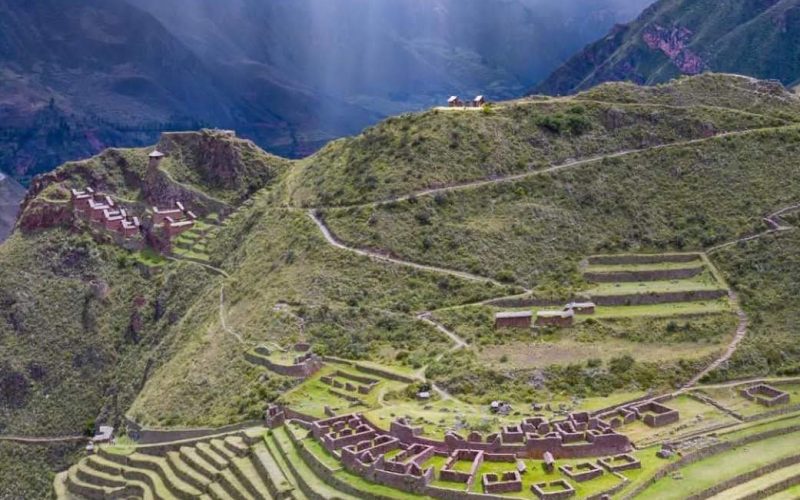

Birding Machu Picchu: Inca Wren, Green-and-white Hummingbird & Torrent Duck
Today we descend to a lower, warmer, and more humid region—where the Andes meet the Amazon Rainforest. This unique ecological transition zone makes Machu Picchu one of the most biodiverse archaeological sites in the world.
We’ll take a scenic train ride to Aguas Calientes (Machu Picchu Town), often spotting Torrent Duck and White-capped Dipper along the riverside. Upon arrival, we’ll enjoy some light birding around town, where we may find species such as Highland Motmot, Green-and-white Hummingbird (E), Black-capped Tyrannulet, Bolivian Tyrannulet, Sclater’s Tyrannulet, Variable Antshrike, Andean Solitaire, and Black-streaked Puffbird.
After lunch, a short 20-minute bus ride takes us to the awe-inspiring Machu Picchu Sanctuary—one of the New Seven Wonders of the World. With more than 200 structures spread across 30 hectares of dramatic peaks and terraced slopes, the site is a breathtaking union of Inca architecture and lush subtropical nature.
While exploring the sanctuary, we’ll also keep an eye out for birds such as the elusive Inca Wren (E), White-tipped Swift, Ocellated Piculet, and Tricolored Brushfinch, among others.
In the afternoon, we’ll board the return train back to the Sacred Valley, enjoying more scenic views as the sun sets over the Urubamba River.
🛏️ Night in a 3* superior hotel – Ollantaytambo
Birding Abra Málaga Endemics
Once described by James Zimmer as "the finest field birder and ornithologist the world had ever seen," Ted Parker expressed a strong preference for this site—one that spans an impressive altitudinal gradient and shelters many rare and range-restricted bird species.
Early in the morning, after a two-hour drive, we’ll begin birding on the eastern slope of the Andes, exploring a mosaic of puna grasslands, elfin forest, and cloud forest. This region is famous for its endemism and productivity.
Target species include:
Marcapata Spinetail (E), Urubamba Antpitta (E), Red-and-white Antpitta (E), Parodi’s Hemispingus (E), Unstreaked Tit-Tyrant (E), Inca Wren (E), Taczanowski’s Tinamou, Diademed Tapaculo, Gray-breasted Mountain-Toucan, Amethyst-throated Sunangel, Scaled Metaltail, Black-capped Hemispingus, Scarlet-bellied Mountain-Tanager, Plushcap, Yellow-billed Cacique, among others.
We’ll enjoy a field lunch surrounded by stunning scenery and will return to Ollantaytambo in the evening for dinner and rest.
🛏️ Night in a 3* superior hotel – Ollantaytambo
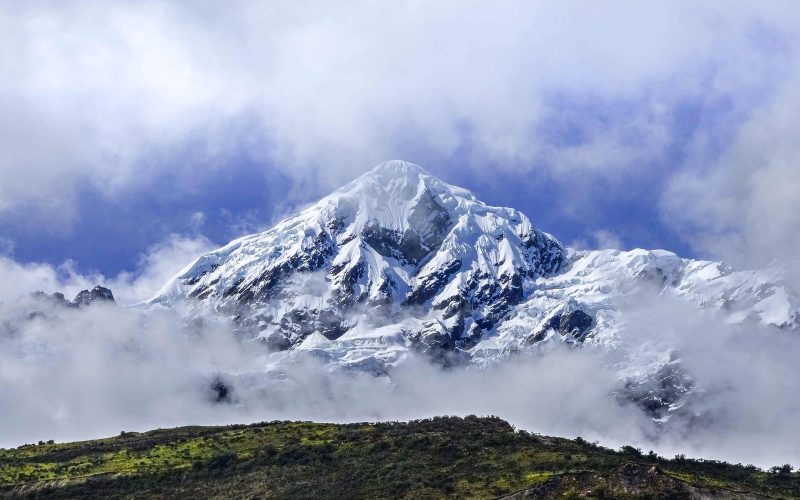

Inca Megastructures and Highland Lakes
The Urubamba River, one of the most important tributaries of the Amazon Basin, carves through the Sacred Valley of the Incas, home to some of Peru’s most breathtaking cultural and natural landscapes.
Our day begins with a visit to the megalithic site of Ollantaytambo, an extraordinary example of Inca military, agricultural, and religious innovation. Its colossal stone terraces and ceremonial temples showcase advanced Andean engineering framed by spectacular mountain views.
We’ll then continue to Moray, a fascinating pre-Hispanic agricultural laboratory composed of concentric terraces that reflect the ingenuity of ancient Peruvian science and architecture. To close the morning, we’ll visit the Maras Salt Mines, a stunning network of terraced salt pools nestled into the mountainside—one of the most unique and photogenic spots in the Andes.
After lunch, we’ll head into the highlands of Chinchero, where we’ll explore several scenic lakes that are excellent for highland waterbirds. Target species include:
Silvery Grebe, Puna Teal, Andean Goose, Short-billed Pipit, and others.
Additionally, these wetlands are a stopover for boreal migrants during the austral summer, with chances to see:
Pectoral Sandpiper, Wilson’s Phalarope, Baird’s Sandpiper, and Upland Sandpiper.
The late afternoon is free for you to relax and enjoy Cusco at your own pace.
🛏️ Night at Casa Andina Catedral (3* superior hotel) – Cusco
From Cusco to Manu: Bearded Mountaineer.
We begin our journey early in the morning, departing from Cusco after breakfast toward the renowned Huacarpay Wetlands, a high Andean lake complex recognized by UNESCO as a RAMSAR site for its ecological importance.
This wetland is home to a rich diversity of species, including waterfowl, endemics, and hummingbirds—among them, the largest in the world. Possible sightings include:
Rusty-fronted Canastero (E), Bearded Mountaineer (E), Puna Tinamou, Yellow-billed Pintail, Puna Teal, Andean Lapwing, Plumbeous Rail, White-tufted Grebe, Puna Ibis, Giant Hummingbird, Many-colored Rush-Tyrant, and Andean Flicker.
In addition, Huacarpay serves as a seasonal stopover for both austral and boreal migratory birds, making it a dynamic and productive site year-round.
From there, we’ll begin our ascent along one of the most spectacular birding routes in South America, climbing into the pristine elfin forest, which marks the entrance to Manu National Park, perched at the top of the cloud forest on the western slope of the Andes.
Here, we’ll be searching for an impressive list of specialties, including:
Solitary Eagle, Mountain Caracara, Variable Hawk, Creamy-crested Spinetail (E), Grass-green Tanager, Golden-collared Tanager, Scribble-tailed Canastero, Red-and-white Antpitta (E), Urubamba Antpitta (E), Marcapata Spinetail (E), Taczanowski’s Tinamou, Puna Tapaculo, Moustached Flowerpiercer, Black-faced Brushfinch, among others.
🛏️ Night at Wayqecha Biological Station – Cloud Forest Zone
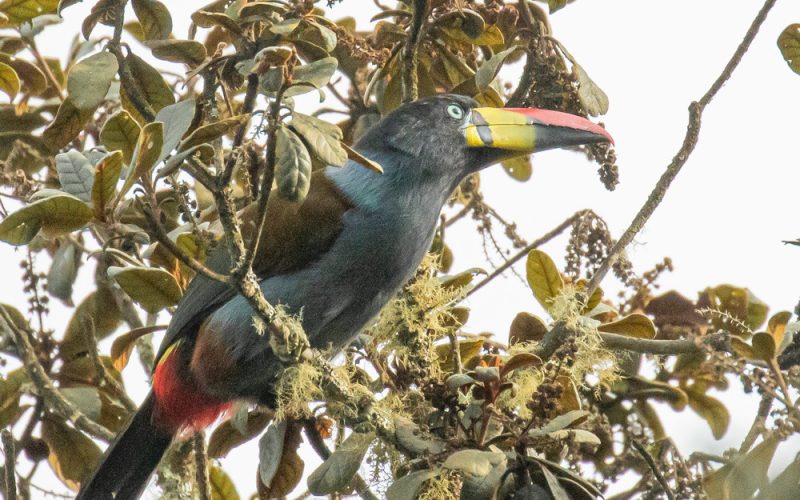
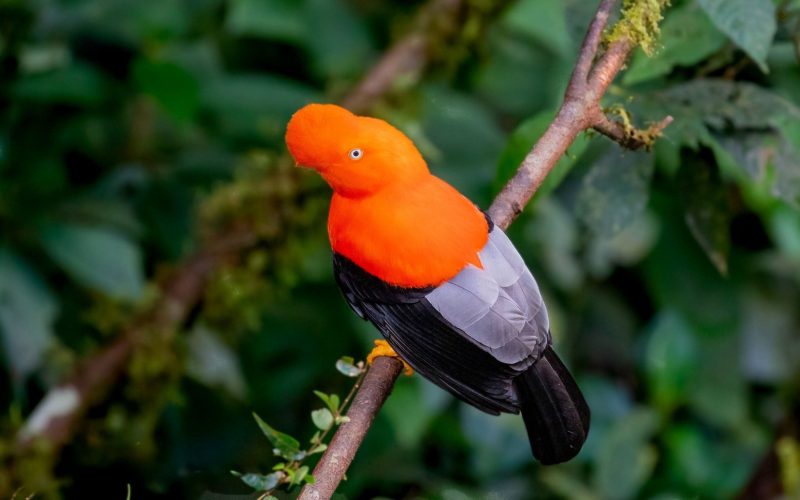
Wayqecha to Cock-of-the-Rock
Wayqecha Biological Station is perched in the mystical elfin forest at 3,000 meters elevation—an ecosystem that remains one of the least understood and most delicate in the tropical Andes. Chilly, humid, and often shrouded in clouds, this habitat offers a unique birding experience, enriched by the presence of orchids, rare mammals, and a high level of endemism.
The lodge’s garden regularly attracts beautiful hummingbirds such as:
Long-tailed Sylph, Scaled Metaltail, Tyrian Metaltail, Shining Sunbeam, and Cuzco Starfrontlet (E) (recently split from Violet-fronted Starfrontlet).
Notable bird species often observed in the area include:
Hooded Tinamou, Stripe-faced Wood-Quail, Semi-collared Hawk, Black-and-chestnut Eagle, Sword-billed Hummingbird, Masked Trogon, Crimson-mantled Woodpecker, Puna Thistletail, Marcapata Spinetail (E), Band-tailed Fruiteater, Rufous-backed Treehunter, Red-and-white Antpitta (E), Leymebamba Antpitta, Trilling Tapaculo, White-throated Tyrannulet, White-banded Tyrannulet, among others.
This area is also home to iconic mammals such as the Spectacled Bear and the Culpeo (Andean fox), occasionally seen along the forest trails.
🛏️ Night at Cock-of-the-Rock Lodge – Cloud Forest Zone
Cloud Forest: Andean Cock-of-the-rock Lek
Located at 1,500 meters elevation, San Pedro lies in the heart of the Cloud Forest—warmer, greener, and more comfortable than the higher elevations of Wayqecha. This lush and vibrant habitat offers incredible biodiversity and one of the most unforgettable wildlife spectacles in the region: the Andean Cock-of-the-rock lek.
At dawn, you’ll witness a stunning performance as several vivid red-orange males gather at a traditional display site (lek) to compete for the attention of duller-colored females. A viewing platform is strategically placed for safe and close observation of this natural show.
Other cloud forest specialties in the area include:
Brown Tinamou, Rufous-breasted Wood-Quail, Rufescent Screech-Owl, Buff-thighed Puffleg, Rufous-booted Racket-tail (E), Peruvian Piedtail (E), Violet-fronted Brilliant, Speckled Hummingbird, Blue-banded Toucanet, Highland Motmot, Blue-moustached Barbet, White-backed Fire-eye, Stripe-chested Antwren, White-crowned Tapaculo, Maroon-belted Chat-Tyrant, Fulvous-breasted Flatbill, Cinnamon-faced Tyrannulet, Crested Quetzal, Scale-crested Pygmy-Tyrant, Yellow-rumped Antwren, Yellow-breasted Warbling Antbird, Yungas Manakin, Cerulean-capped Manakin, Inca Jay, White-capped Dipper, Andean Solitaire, Olive Finch, Two-banded Warbler, Carmiol’s Tanager, Russet-backed Oropendola, along with a large variety of colorful tanagers and mixed flocks.
A newly discovered tanager species, still undescribed by science, has been observed and photographed in this very forest.
In addition to birds, mammals such as the Andean Woolly Monkey and Shock-headed Capuchin Monkey can also be seen in this remote region of Manu.
🛏️ Night at Cock-of-the-Rock Lodge – San Pedro Cloud Forest
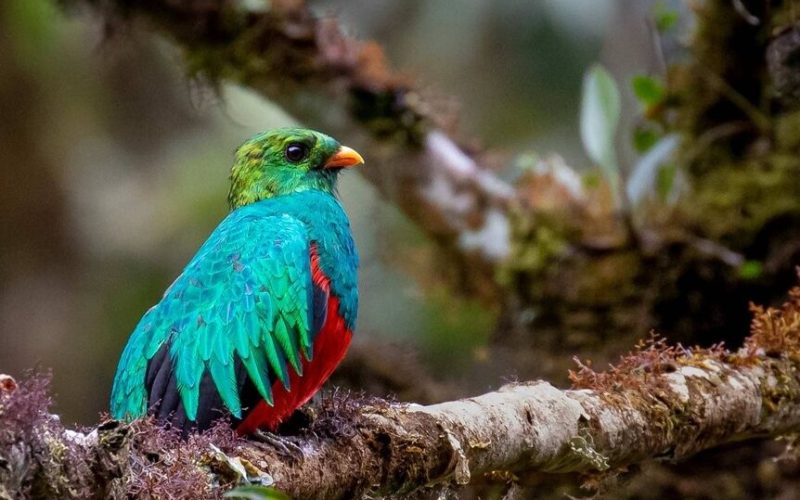
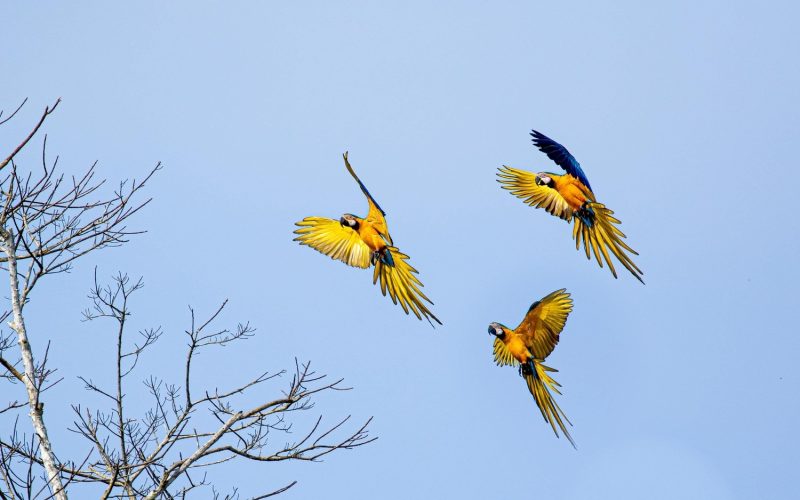
Manu Biolodge: Bamboo Endemics, Macaws, and Antbirds in the Foothills
In the afternoon, we arrive at Manu Biolodge (formerly Villa Carmen), located at 500 m elevation and bordering Manu National Park. This 3,000-hectare private reserve is a hotspot for bamboo specialists, foothill endemics, and Amazonian wildlife.
We’ll explore trails and bamboo patches in search of key species such as:
Rufous-headed Woodpecker, Manu Antbird, Rufous-vented Ground-Cuckoo, White-lined Antbird, White-cheeked Tody-Flycatcher, Bamboo Foliage-Gleaner, Fine-barred Piculet, Scarlet-hooded Barbet, Foothill Antwren, and more.
Lodge trails often yield:
Military Macaw, Great Potoo, Rufous-capped Nunlet, Ornate Flycatcher, Fiery-capped Manakin, Yellow-breasted Warbling-Antbird, and Band-tailed Manakin.
Nearby wetlands and rivers may offer:
Hoatzin, Gray-cowled Wood-Rail, Riparian Antbird, Ladder-tailed Nightjar, and Black-billed Seed-Finch.
Hummingbird feeders attract:
Koepcke’s Hermit (E), Rufous-crested Coquette, White-necked Jacobin, and more.
Additional visitors include Amazonian Antpitta, King Vulture, and Rufous-sided Crake.
Mammals like Night Monkey, Urubamba Titi Monkey, and Spider Monkey are possible.
Nocturnal birding is excellent, with Black-banded Owl, Striped Owl, Tropical Screech-Owl, and Common Potoo nearby.
🛏️ Nights at Manu Biolodge
Manu Foothills to Wayqecha: Black-backed Tody-Flycatcher & Cuzco Warbler
We’ll begin our final morning at Manu Biolodge, birding near the lodge where feeders and nearby trails offer close encounters with species like:
Black-capped Tinamou, Little Tinamou, Undulated Tinamou, and Amazonian Antpitta.
Other key sightings around the lodge may include:
White Hawk, Blue-headed Macaw, Military Macaw, Rufous-capped Nunlet, White-lined Antbird, Sooty Antbird, Bamboo Antshrike, Foothill Antwren, Johanne’s Tody-Flycatcher, Mottle-backed Elaenia, Black-backed Tody-Flycatcher (E), Rusty-belted Tapaculo, and Cuzco Warbler.
After lunch, we’ll begin our journey back up the Andean slope, making birding stops along the way. These may reward us with better views or previously missed targets like:
Urubamba Antpitta (E), Cerulean-capped Manakin (E), Yungas Manakin, Crimson-crested Woodpecker, White-backed Fire-eye, Slaty Gnateater, Buff-tailed Sicklebill, Inca Flycatcher (E), Ochraceous-breasted Flycatcher, Black-throated Tody-Tyrant, Golden-headed Quetzal, Crested Quetzal, and White-collared Jay.
🛏️ Night at Wayqecha Lodge – Cloud Forest Zone
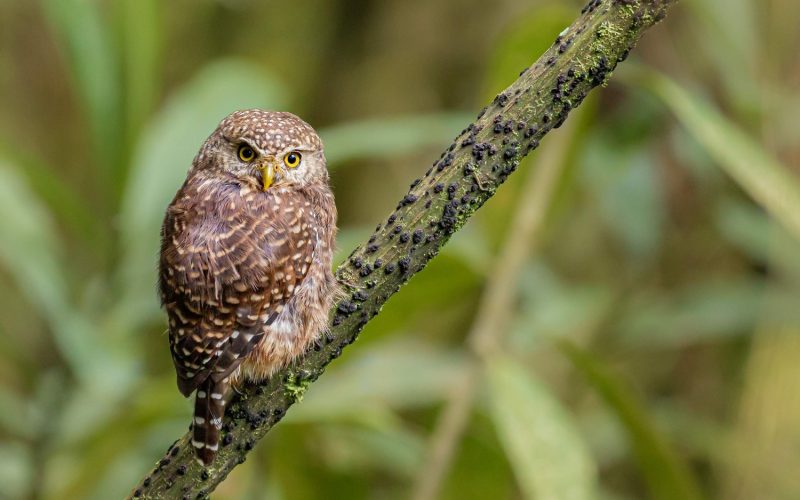
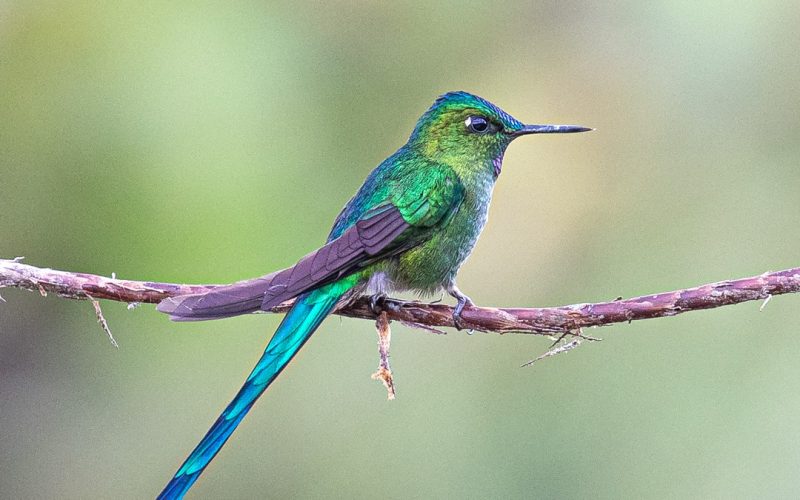
From Wayqecha to Cusco
After an early breakfast and some final trail birding at Wayqecha, we’ll begin our gradual ascent back toward Cusco, making strategic stops along the way for any missed highland species.
Target birds for the day include:
Superciliaried (Urubamba) Hemispingus (E), Pale-legged Warbler, Black-faced Brush-Finch, Dusky-green Oropendola, and Mountain Cacique.
We aim to arrive in Cusco by mid-afternoon, giving you time to rest or enjoy the historic city one last time.
🛏️ Night at Casa Andina Catedral (3* superior hotel) – Cusco
Qoricancha, Saqsaywaman, and Final Endemics near Tambomachay
After breakfast, we’ll explore the ancient capital of the Inca Empire with visits to two of Cusco’s most remarkable archaeological sites:
-
The Temple of the Sun (Qoricancha) – once the most sacred site in the Inca world.
-
Saqsaywaman – a monumental fortress overlooking the city, built in a jaw-dropping megalithic style that showcases the architectural mastery of pre-Hispanic Peru.
These sites provide a profound cultural and historical complement to your nature-filled journey.
By mid-afternoon, we head toward Tambomachay, located in the highlands just outside Cusco, for a final chance to see Andean specialties, including:
Peruvian Sierra-Finch, Mourning Sierra-Finch, Andean Flicker, Giant Hummingbird, and if still needed, two important endemics:
Creamy-crested Spinetail (E) and Chestnut-breasted Mountain-Finch (E).
📍 Transfer to Cusco Airport at the appropriate time.
END OF SERVICES
Trip Includes
Includes
Does not include
FAQ
Frequently Asked Questions
🚂 What train do we take to Machu Picchu and how long is the ride?
We board the train in Ollantaytambo, located in the Sacred Valley.
The ride to Aguas Calientes takes approximately 1 hour and 45 minutes.
We travel in the Expedition service 🚆 — a comfortable tourist-class train with panoramic windows and stunning views along the Urubamba River.
Once in Aguas Calientes, we take the shuttle bus up to Machu Picchu.
🎯 What is the balance between birding and cultural activities?
This is primarily a birding tour, with most of each day focused on birdwatching in cloud forests, Andean foothills, and iconic hotspots like the Manu Road. 🐦
However, we also visit some of the most breathtaking archaeological sites in the world, such as:
-
Machu Picchu Sanctuary
-
The ruins of Pisac, Ollantaytambo, and Saqsaywaman
-
A walking tour through historic Cusco
📜 These visits include cultural and historical interpretation and serve as enriching complements to the birding — many archaeological zones are also biodiversity hotspots.
🧳 Are transfers and airport pickups included?
✅ Yes, all airport pickups, drop-offs, and land transfers are included:
-
Arrival and departure transfers in Cusco
-
All transport between birding sites and lodges
-
Train tickets to/from Machu Picchu
You don’t need to worry about transportation logistics — we handle it all for you.
🐾 What’s the longest walk during the tour?
The longest walks are during forest birding on Manu Road and at Machu Picchu, lasting up to 3–4 hours at a slow birding pace.
Our car will be close to us in most of our hikes in case of rain or fatigue.
Trails may be muddy, rocky, or include gentle slopes and stairs.
👟 We recommend waterproof hiking boots and walking poles for stability.
🚐 What’s the longest drive on the tour?
The longest drive is from Cusco to Wayqecha Lodge, taking 6–7 hours, including several stops for birding and lunch.
Manu Road includes curvy mountain roads and scenic landscapes.
Other drives, such as those to Ollantaytambo or Huacarpay, are shorter (1–2 hours).
🏨 What kind of lodges will we stay in?
We stay in birding lodges and 3-star superior hotels, selected for their:
-
Comfort
-
Birding access
-
Local character
Lodging may include:
-
Cock-of-the-Rock Lodge
-
Wayqecha Cloud Forest Biological Station
-
Manu Biolodge (formerly Villa Carmen)
-
Pakaritampu in Ollantaytambo (3*** superior hotel)
-
Casa Andina Catedral in Cusco (3*** superior hotel)
🍽️ Are meals included?
Yes, the tour offers full-board service.
Included: Breakfast, lunch, snacks, and dinner are provided during travel days (except for the first breakfast and last dinner).
Dietary Needs: Let us know in advance if you have any special dietary requirements.
📏 What elevations will we visit?
This tour covers a wide range of altitudes:
-
Cusco & Sacred Valley: 2,800–3,400 m (9,200–11,000 ft)
-
Abra Málaga: Over 4,000 m (13,000 ft)
-
Manu Road & Cock-of-the-Rock: 1,200–2,800 m (4,000–9,200 ft)
-
Machu Picchu: ~2,430 m (7,970 ft)
🌬️ The itinerary includes acclimatization time to ease altitude adjustment.
👥 What’s the group size?
We keep our groups small for a high-quality, personalized experience.
👤 Maximum: 2–6 participants per fixed departure / up to 8 participants for private tours.
🔌 Can I charge my devices?
Yes — all hotels and lodges provide electricity.
⚠️ Some remote lodges (like Cock-of-the-Rock) may have limited electricity hours (6–9 pm).
🔋 Bring a power bank or extra camera batteries for flexibility.
⚡ Peru uses 220V/60Hz electricity, but most modern electronics (phones, cameras, laptops) are dual-voltage (100–240V), so they work fine.
🔌 Outlets often accept both flat (Type A/B) and round (Type C) plugs. It’s a good idea to bring a universal adapter just in case.
💉 Are any vaccines required?
Get the Yellow Fever vaccine 💉 if you are traveling to lowland jungle areas or extending your trip into the Amazon basin.
For this tour, it’s not mandatory, but recommended as a precaution — especially for Manu Road.
🎒 What kind of luggage should I bring?
We suggest packing light and smart for this trip.
Recommended:
-
🎒 A daypack for daily outings
-
🧳 A carry-on-sized suitcase or duffel bag
Larger luggage is accepted, but since we change lodges frequently, lighter packing makes transitions much easier.
There is no strict weight limit, but efficient packing is highly encouraged.
DISCOVER OUR SCHEDULED TOUR DATES
Our Fixed - Schedule 2026
Birding & Culture Tour in Machupicchu and Manu Road | 13 Days
Book NowTour Guides: Danny Vargas – Alex Durand – Miguel Vargas – William Huaman
Dates:
- 🟢 From March 11 to March 23
- 🟢 From May 27 to June 8
- 🟢 From July 1 to July 13
- 🟢 From August 12 to August 24
- 🟢 From September 9 to September 21
- 🟢 From November 18 to November 30
- 🟢 From December 2 to December 14
Price: $3650.00 per person
Single Supplement: $650.00
Each tour operates with a minimum of 2 and a maximum of 6 participants. In the event that only 2 participants confirm, a small additional charge of 6% over the total cost will be applied to guarantee the departure.
Our Fixed - Schedule 2025
Birding & Culture Tour in Machupicchu and Manu Road | 13 Days
Book NowTour Guides: Danny Vargas – Alex Durand – Miguel Vargas – William Huaman
Dates:
- 🔴 From March 11 to March 23
- 🟡 From May 27 to June 8
- 🟡 From July 1 to July 13
- 🟡 From August 12 to August 24
- 🟢 From September 9 to September 21
- 🟢 From November 18 to November 30
- 🟢 From December 2 to December 14
Price: $3550.00 per person
Single Supplement: $615.00
Each tour operates with a minimum of 2 and a maximum of 6 participants. In the event that only 2 participants confirm, a small additional charge of 6% over the total cost will be applied to guarantee the departure.

